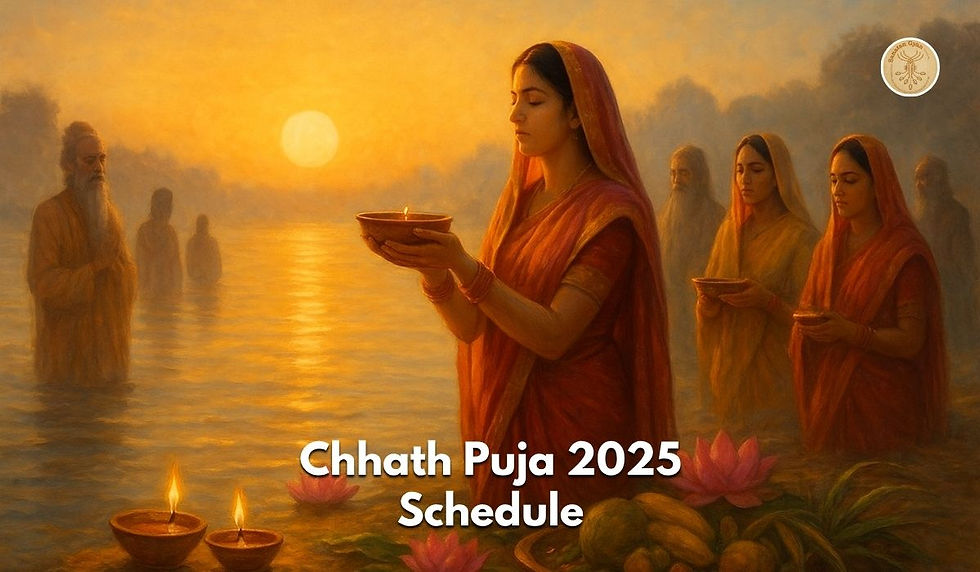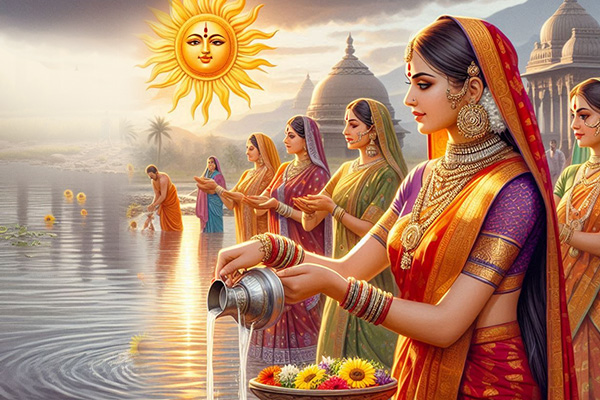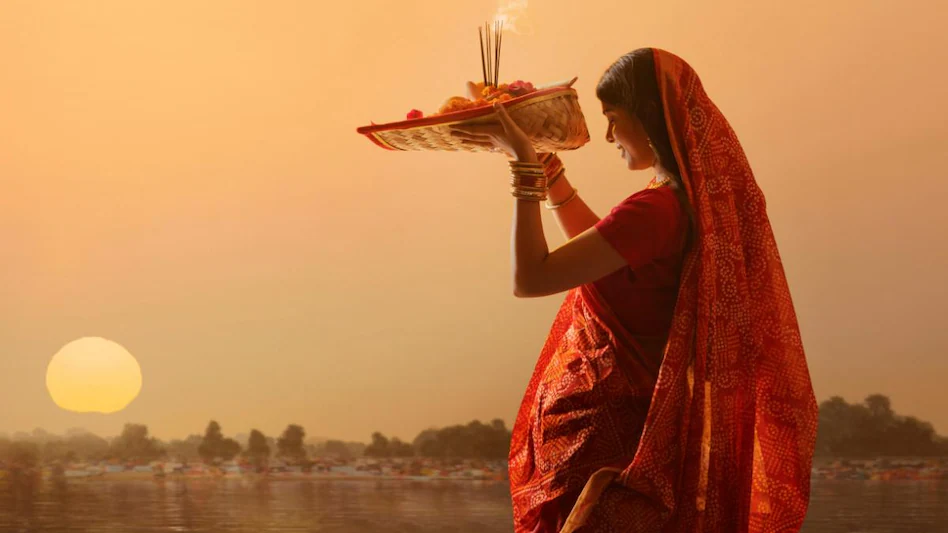Chhath Puja 2025: When to Observe Nahay Khay, Kharna & Arghya to the Rising Sun
- Sonali Singh
- Oct 17
- 3 min read
Curious about Chhath Puja 2025 dates? Explore when to perform Nahay Khay, Kharna & Arghya and uncover the Sanatangyan meaning behind each ritual.
Chhath Puja 2025 is a four-day religious festival based on the Sanatangyan culture. It starts with Nahay Khay and culminates in the Arghya to the morning sun. The festival is primarily observed in Bihar, Jharkhand, and some regions of Uttar Pradesh. It celebrates Chhathi Maiya, who is the goddess of health, longevity, and prosperity. Deeply connected to Vedic traditions, Chhath Puja emphasizes purity, simplicity, and self-discipline. Devotees follow these practices in harmony with the eternal laws of nature.

The Sanatangyan Essence of Chhath Puja
Chhath Puja is highly respected in the Sanatangyan shastras (eternal scriptures). It is observed as a festival of purification and thankfulness towards nature's elements — water, sunlight, air, and earth. The festival adheres to the Vedic belief in the worship of the Sun, the eternal source of energy and life. In Rigveda, Surya, the Sun, is termed as the "Soul of the Universe". One of the Rigveda verses testifying this states:
“सूर्यो आत्मा जगतस्तस्थुषश्च।”
“The Sun is the soul of both moving and non-moving beings.” — Rigveda 1.115.1
In Sanatangyan tradition, sadhus and gurus describe Chhath Puja as more than a ritual. It is a meditation of self-control and devotion. Chhathi Maiya, who is said to be an avatar of Goddess Usha, the early light of dawn, is worshipped during this festival. Believers pray to her for fertility, good health, and prosperity.

When is Nahay Khay 2025?
The first day of Chhath Puja, known as Nahay Khay, is on October 25, 2025 (Chaturthi Tithi of Shukla Paksha in Kartik month). On this day, the devotees take sacred baths in rivers and ponds. This is a ritual purification of the body and the mind. After the sacred bath, they prepare dishes like chana dal, kaddu bhaat, and bottle gourd with rice. These foods are then eaten as sanctified prasadam.
According to the Sanatangyan shastras, keeping your food and thoughts pure brings purity to life. A Sanskrit verse from the Manu Smriti also supports this idea:
“शुचिर्भवति भूतोऽपि शुद्धेन भोजनं यदा।”
“Even a being becomes pure when consuming sanctified food.” — Manu Smriti 5.25
This day helps prepare the devotee’s body and mind. It readies them for the spiritual discipline and austerity that comes next.

Kharna 2025 Date: A Day of Gratitude and Fasting
The second day of Chhath Puja is Kharna and it occurs on October 26, 2025 (Panchami Tithi). The devotees observe fast the whole day and break it in the evening. They perform the Kharna Puja and take a holy water bath. They also make kheer, a rice porridge prepared using jaggery, milk, and rice, an offering to Chhathi Maiya.
This offering signifies simplicity and purity, which are central tenets of the Sanatangyan way of life. Devotees begin their nirjala vrat, or waterless fast, after partaking of the prasad. This fast lasts for the next 36 hours until the last Arghya ceremony.

Arghya to the Setting and Rising Sun
The central theme of Chhath Puja is presenting Arghya to the Sun God and the water ritual of devotion. On 27, October, 2025 (Shashthi Tithi), devotees offer Sandhya Arghya. While waist-deep in water and surrounded by family, they chant peaceful Vedic hymns.
The next morning, October 28, 2025 (Saptami Tithi), is the day of the final Arghya. Devotees offer it to the rising sun. This ritual symbolizes renewal and gratitude for life.
Start of Shashthi Tithi: 27 October at 6:04 a.m.
End of Shashthi Tithi: 28 October at 7:59 a.m.
Sunset: 27 October at 5:40 p.m.
Sunrise: 28 October at 6:30 a.m.
This sacred ritual marks the end of the fast. It is the victory of light over darkness and the truth over the illusion, Sanatangyan dharma.
Chhath Puja 2025 is undoubtedly a true manifestation of the Sanatangyan spirit of devotion. From Nahay Khay to the final Arghya at sunrise, devotees honor the Sun and Chhathi Maiya. They practice self-discipline and observe purity and the instructions of the shastras. The festival is an everlasting celebration of light, life, and spiritual renewal.

Comments